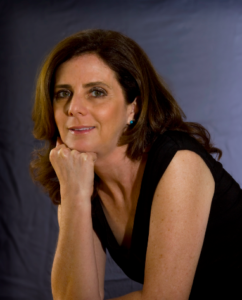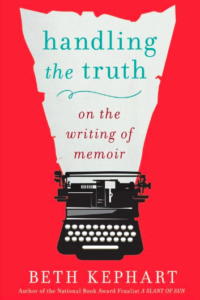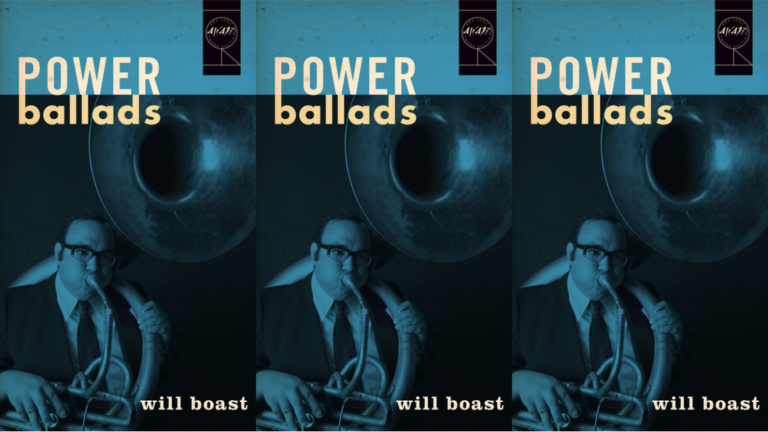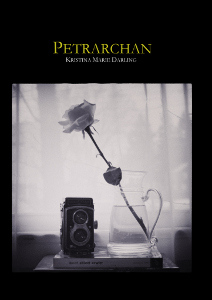The Books We Teach #7: Interview with Beth Kephart
The Books We Teach series will feature primary, secondary, and post-secondary educators and their thoughts about literature in the face of an evolving classroom. Posts will highlight literary innovations in teaching, contemporary literature’s place in pedagogy, and the books that writers teach. In the spirit of educational dynamism, we encourage readers to contribute their thoughts in the comments section.
Beth Kephart is the author of fifteen books, most recently Handling the Truth: On the Writing of Memoir (Gotham, August 2013). She is a National Book Award finalist, Master Writing Teacher for the national YoungArts program, and frequent contributor to The New York Times Book Review, Washington Post, Salon.com, Chicago Tribune, Philadelphia Inquirer, and many others. Her acclaimed memoirs and young adult fiction have garnered her grants from The National Endowment for the Arts, Pew Center, and The Pennsylvania Council on the Arts, among others. Kephart has lectured and taught at universities and high schools across the country, and now teaches creative nonfiction at The University of Pennsylvania.
Here, Beth and I discuss the importance of exercising empathy, the ethics of memoir, and her delight in teaching students who come to her at varying points in their writing lives.
Apropos of your chapter in Handling the Truth, “Exercising Empathy,” can you articulate how you underscore the importance of empathy when teaching writing students? In the classroom, what texts do you often cite that exercise empathy deftly? Why are these texts so crucial to understanding empathy as the cornerstone of memoir?
One of the reasons that I love being in a classroom is that we are endlessly learning empathy from one another. I spend a lot of time in the early sessions building trust. I require the students to get engaged—to pay attention to the work that arises from in-class exercises and to the person doing that work. I require them to notice who is speaking, and why. We interview one another. We define expectations. We make psychic and literal room for one another; it’s a very small classroom. We establish a framework, and a mood, and so we are prepared. We are empathic.
The best writers of memoir demonstrate empathy both for themselves and for those whom they include in their stories. There are two pages in Natalie Kusz’s memoir, Road Song, that I read out loud every year. Kusz was a little girl walking home from school in her new home of Alaska when she was attacked by tethered huskies. That attack will define the remainder of her childhood and much of her adolescence as she succumbs to countless operations to repair her devastated face.
But when Kusz writes about the attack, she writes almost gently, almost quietly, of the violence. She writes of the mittens she was wearing:
I watched my mitten come off in his teeth and sail upward, and it seemed unfair then and very sad that one hand should freeze all alone; I lifted the second mitten off and threw it away, then turned my face back again, overtaken suddenly by loneliness.
When I read these words aloud (through tears, always), there is silence in the room. There is huge respect for a writer who, at that traumatic moment in her life, cares for the weather, cares for the mittens, speaks of loneliness, not rage. This is a writer whose entire book is filled with that kind of concern for other things, and other people.
Empathy is, according to Merriam-Webster, “the imaginative projection of a subjective state into an object so that the object appears to be infused with it.” Kusz projects as she writes. The students project as they read. And this sort of projection happens in many wonderful memoirs. I think of Patricia Hampl, Gail Caldwell, Lucy Grealy, Caroline Knapp, Abigail Thomas. And, by the way, let us not assume that empathy is a talent reserved for women; read Geoffrey Wolff and Mark Richard and C.K. Williams and many others, and you’ll find it there.
When a memoirist lets us see her or his world—when she or he evokes it instead of judges it—we are taught empathy. We are inspired by it.
You explain many wonderful writing exercises in Handling the Truth. What is one exercise that you turn to, time and again, when teaching memoir? What is it about this exercise that affects students so deeply?
Oh, so many. But let’s go with the tried and true. Find a photograph of yourself at a critical juncture. Recreate that moment in the past tense. Recreate it in the present tense. See what happens. So much is learned in the aftermath of this exercise, about tone and tense and ways of seeing. Are you reflective or urgent in your style, anecdotal or scientific, consumed with getting it right or intrigued by the gauze of time? It is also a very fun way to open doors to one another.
Can you talk a bit about a piece of advice you received at some point in your writing past that you now pass on to your students?
Wow. Well. I had a pretty idiosyncratic upbringing as a writer, for I never even met another writer until I was married and had a child, and I never took formal classes, just three summer workshops with Rosellen Brown, Reginald Gibbons, Jayne Anne Phillips, and William Gass. I’ve never been a member of a critique group. So much of what I have learned I have learned from reading, by becoming a critic myself, by forcing myself to know what I think about other people’s books and why.
But from my teachers, proper: Rosellen Brown encouraged me to think about finding the right voice and approach for each book. Jayne Anne talked to me as if I were a writer already. Reginald read aloud from books I had to read. William Gass said to keep going. These sound like small things. But to a fledgling writer they are not.
No doubt, some of your students enter your classes with little to no idea of how to write memoir, what to write about, or if they’re equipped to do such a thing. Others enter your class with much enthusiasm and, perhaps, a memoir in progress. How do you juggle teaching students who come to you at varying points in their writing lives?
I love that there is indeed such a mix. My engineers and doctors in training come in and say, I cannot do this, and they leave with work so good that we often find a publishing home for it. The English majors and creative writers are talented in so many ways, but still, memoir is new to them, often. They have to step back, get their bearings.
The important thing as a teacher is not to pit these students against each other. The important thing is to very carefully gauge who each student individually is, what he or she can do, and where he or she might be taken. I teach a class, and those fifteen students are bonded, tight, friends by the end. But I am also teaching each student individually—through emails, through phone calls, through walks on the campus, through the different reading suggestions I provide for each one. They grow because they want to grow. They grow because they have something to say. And they don’t stop growing. I remain friendly with most of them for years to come. And many remain friendly with one another.
The ethics of memoir are complex and sometimes difficult to articulate. What advice do you give to your students with regard to the moral foundations of memoir?
This is, of course, a huge question and one of the primary reasons I wrote Handling the Truth. So that we could look at these issues square in the eye and address them. I teach from experience. I teach as a woman who has written five memoirs—writing out of love toward love—and who still wishes she had gotten more of it right. I tell them about the ways that memoirists have gone bad (with basic lying). I tell them of the people memoir has hurt (my stories, other stories). I tell them that memoir freezes people in time. I read from “memoir” that is vicious or judgmental or just plain wrong, and I ask: do you want, in the end, to be a writer like this? Is this the legacy you wish to leave?
How does your life as a teacher play into your life as a writer and vice versa? How has your students’ work shaped your conception of memoir?
I find it very difficult to write when I teach. I now write mostly young adult novels—literary creations that take place in foreign cities and require ridiculous amounts of research and frustrate me on a daily basis—but emerge, in the end, somehow. I also run a business—books and magazine stories for companies in a range of industries. I critique adult novels for the Chicago Tribune. I write about place for the Philadelphia Inquirer. I lecture on the state of things in literature in general or write about it in trade journals.
When I teach I can only do some of these things. When I teach, my students come first. They ask brilliant questions. They force me to find new ways of explaining. They disagree and I let them—then return to them the next week with another five memoirs under my arm. Listen to this, I’ll say.
My students inspire me. Always. They are very much in my life. They are also, sometimes, in the novels I write—their names or their spirits or a detail. I clear it with them first, of course. I’ve never had one say no.
But I can’t write anything full-length well when I teach.
Are you teaching any new material in your classes as of late? What are you teaching and why are you excited about teaching it? What will these pieces/books bring to the discussion of memoir?
I am reading, when I can, at least five new memoirs a month. I have so much new to share with my students each semester. Fragments, pages, chapters, or whole books. Joan Wickersham is exciting me lately. Howard Norman. I need to do more to analyze Rebecca Solnit. But I’m never going to give up on what have become, for me, the classics. Always my students will hear me rave about Michael Ondaatje, Patti Smith, Mark Richard, and so many others.




